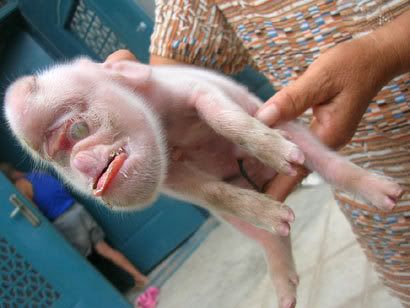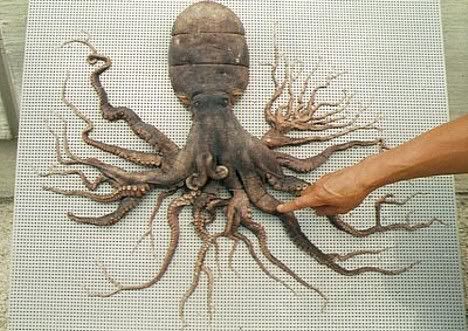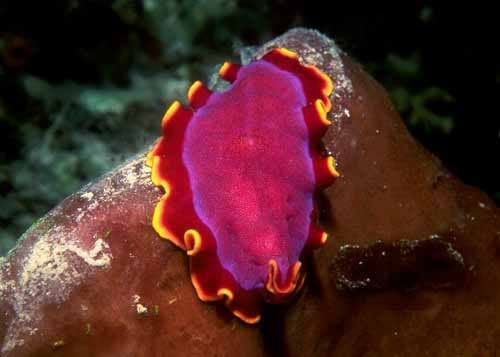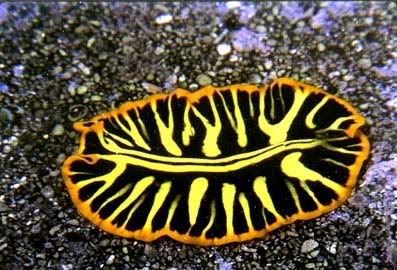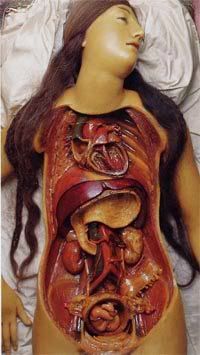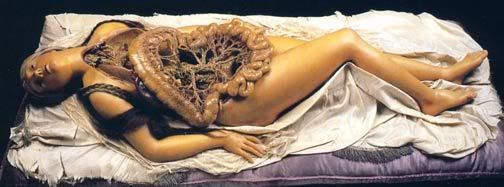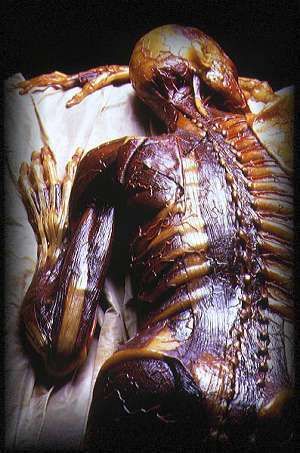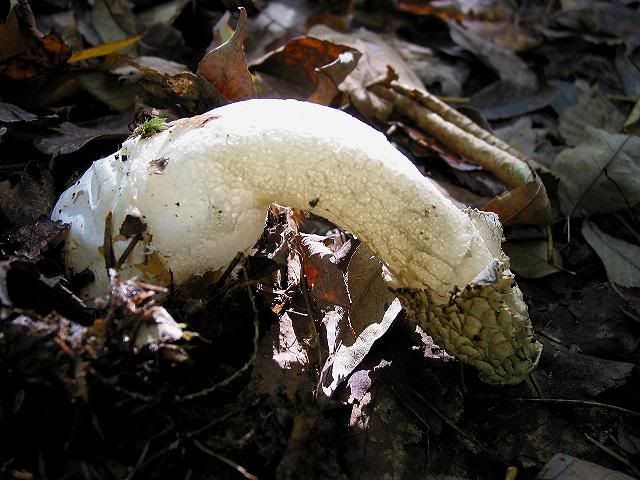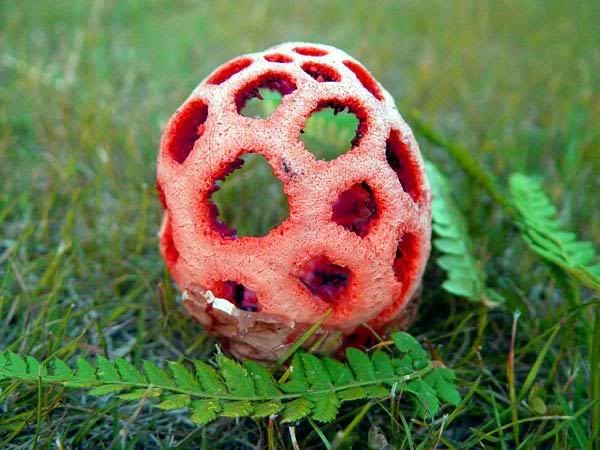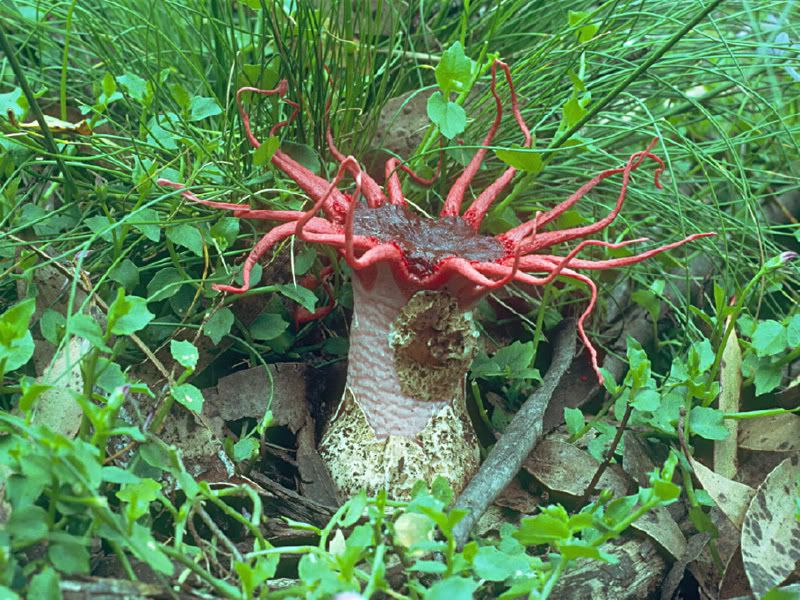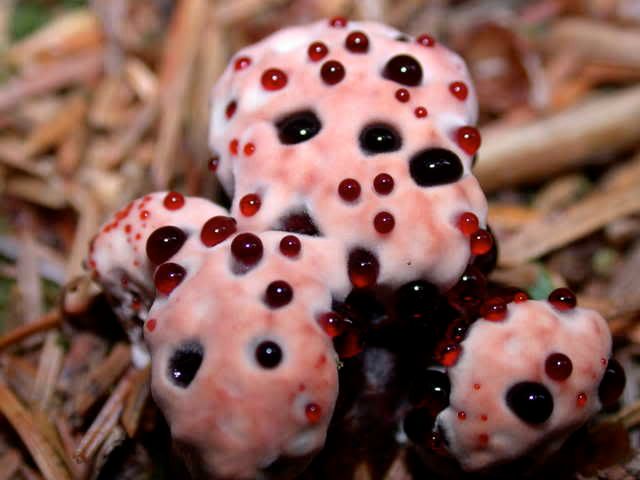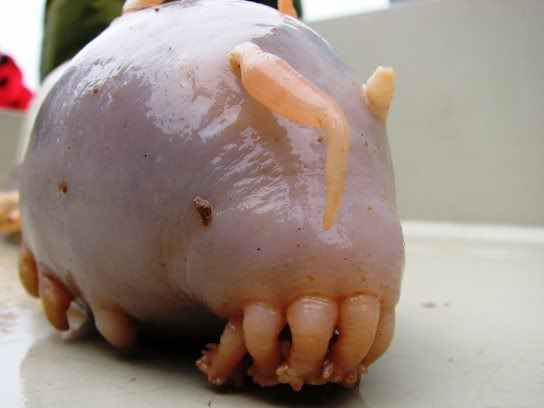2008-07-29
99 bottles of nectar on the wall
Now I'm off for five days at Wacken Open Air where I will indulge in my other main interest, which is the heavier/harder side of music. While there I will probably consume some beer and when I do, I will have the treeshrub in mind!
Source:
http://www.pnas.org/content/early/2008/07/25/0801628105.abstract?sid=4704ed9e-9f9e-4b54-9cc1-9ae8cb46e4a7
2008-07-28
Holy pig!
I myself would like to take it home, pet it, feed it and have it as my very own for ever and ever and ever. And of course, I would try to breed of it. Wouldn't that be something...
2008-07-25
Cthulhu's spawns has 96 arms
I once read the book "Maya" by the norwegian writer Jostein Garner. In one chapter, two of the book's charachters discusses how eventual intelligent lifeforms from other worlds would look like. One of the guys states that they ought to have two hands "because that is enough". In my teenage head I thought that was a good quote so I've kept it with me (of course, I've realized over the years that is not true since evolution isn't a goal-oriented force of nature...but never mind that!).
That is, I thought it was a good quote until I came across this picture of a 96-armed (!!!) octopus (found in Shima Marineland Aquarium). Since octopusses are highly intelligent, this defintitely speaks against the Maya-philosophers view on bright extraterrestrial life.
So I guess that this means that we don't know what to expect when trying to socialize with E.T. and his kin. All Lovecraft-freaks must be
thrilled.
2008-07-24
Engrish.com

This is not really a curiosity but if you enjoy the misunderstandings language differences can give rise to, please visit engrish.com. Homo sapiens - same same but different.
2008-07-23
Spooky flowers!
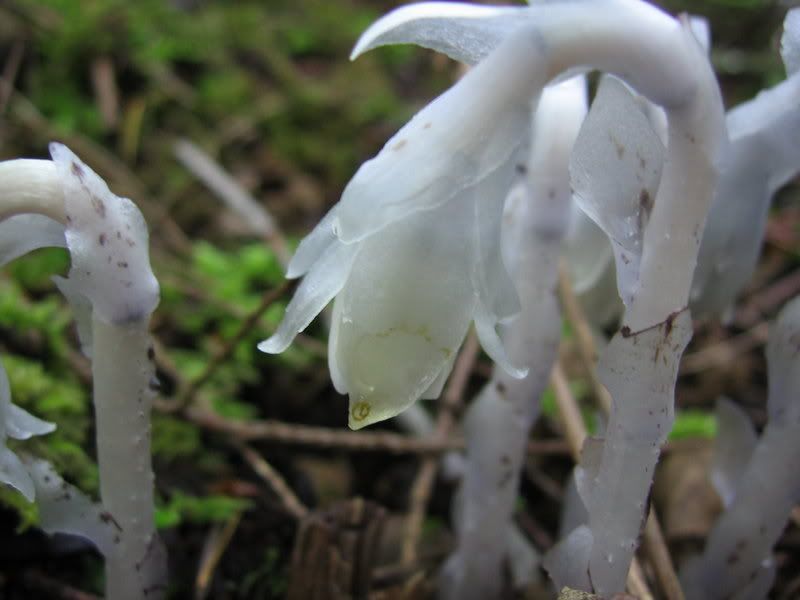
Image revised from http://commons.wikimedia.org/wiki/Image:Monotropa_Uniflora_National_Forest_45_Oregon.JPG
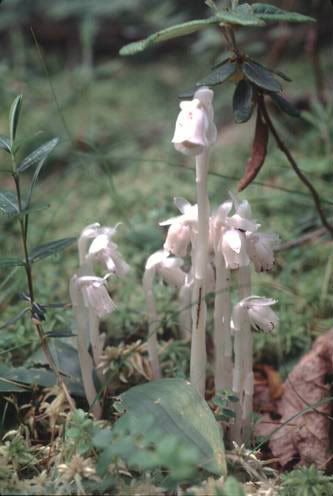
Image revised from http://www.fs.fed.us/wildflowers/regions/eastern/DukesTrail/index.shtml
Being all white and pretty, its tempting to pick a bouquet and bring home but this is not a good idea. Due to its dependance on other organism for energy, the plant will wither away in just a few hours.
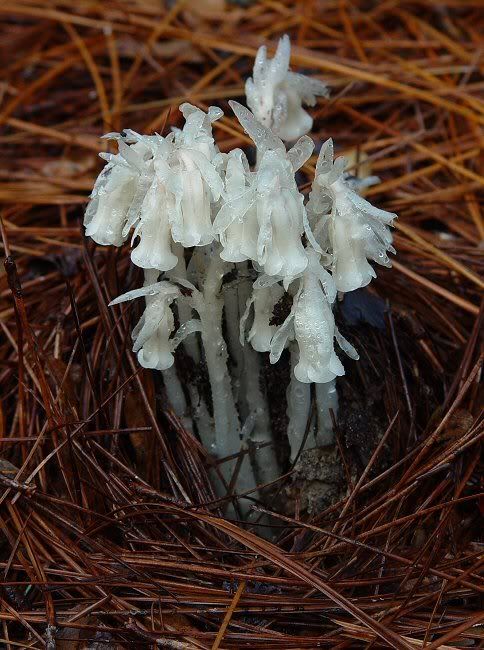
Image revised from http://www.missouriplants.com/Whitealt/Monotropa_uniflora_page.html
Sources: http://botit.botany.wisc.edu/toms_fungi/oct2002.html http://www.ubcbotanicalgarden.org/potd/2005/07/monotropa_unifl.php http://www.mykoweb.com/articles/Mycorrhizas_5.html
2008-07-21
World of worms
I've never liked worms. Actually, you can say that I have a worm-phobia without exaggerating. Since I am a person who wants to be in control of all feelings, this is not really a part of my psyche that I like. Therefore, I try to approach the world of the worms in baby steps. My goal is to be able too look at a living earthworm or leech without feeling the primitive urge to scream and act like a crazy person. But that lies in the future. For now, I'm content with myself when I'm able to read about more pretty worms without any hint of unpleasantness.
Marine flatworms are worms that I can cope with when seen on picture. The mating ritual of some species is fairly entertaining. Being hermaphoditic, the worms produce both eggs and sperms so when getting down to buisness these species have a hard time to decide who's going to be the taker and who's going to be the giver. Therefore they engage in a funny little game called penis fencing (!). The rules is that the first worm to pierce the other one with its penis gets to be the inseminator. The "looser" has to carry the future baby worms. Helluva game I'd say. Imagine the red light district in Amsterdam if humans would mate in this way and you'd get a funny but disturbing picture.
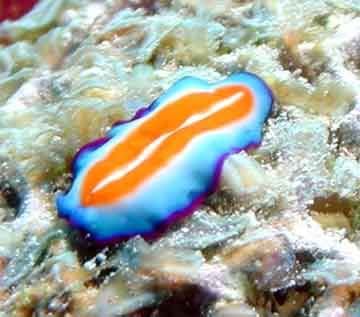
Image revised from http://www.rossum.com/maldiv99/maldive1/images/flatworm.jpg
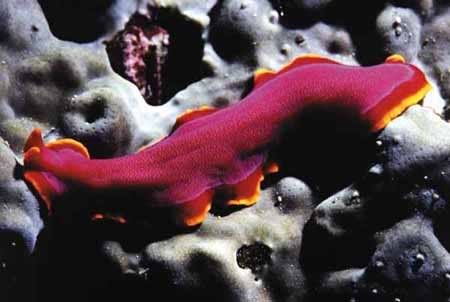
Image revised from http://www.fortunecity.com/victorian/klimt/11/photos.htm
Sources:
http://en.wikipedia.org/wiki/Platyhelminthes
2008-07-20
La Specola
Sources:
http://www.museumsinflorence.com/musei/museum_of_natural_history.html
http://en.wikipedia.org/wiki/La_Specola
Images taken from:
http://scienceblogs.com/bioephemera/2008/02/wombs_waxes_and_wonder_cabinet_1.php
http://www.museumsinflorence.com/musei/museum_of_natural_history.html
http://english.firenze.net/turismo/cm_dettaglio.wbs?id_contenuto=4743&id_categorie=25
2008-07-18
2008-07-17
We accept you, one of us! Gooble gobble! Gooble gobble!
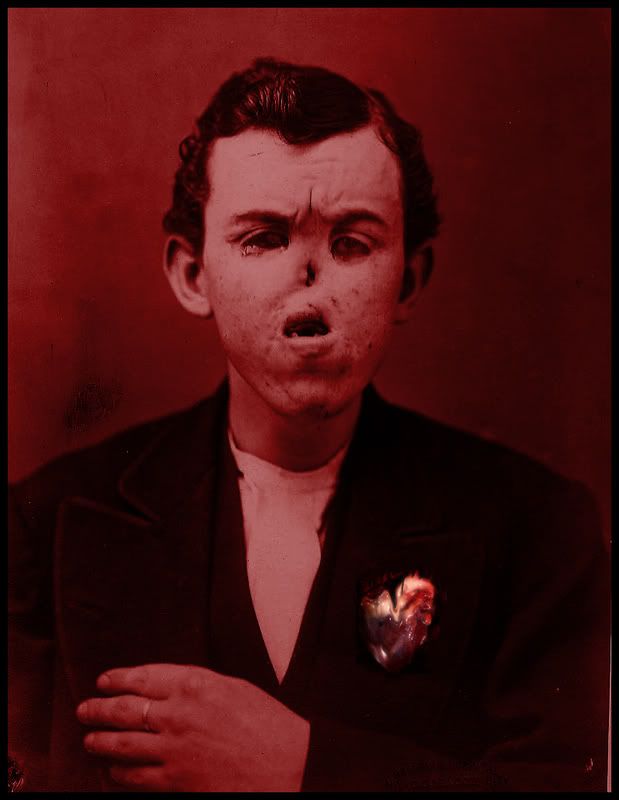
I've always had a soft-spot for deviations of what we generally precive as being normal. Having grown up in a town where anything except "being normal" is regarded as something that needs to "know its place" (and its place is among all the other sheep), I've always felt more or less misplaced. So ever since I was old enough to visit the the library (and when internet entered my pre-teen life) I've indulged in the colourful world of so called "freaks".
The movie "Freaks" came out 1932, and its one of my personal favorites (along side with Life of Brian by Monty python, as well as some horror flicks). The essence of this movie is basically that its not the "freaks" that are the monsters, but the "normal" humans. Of course, this could be seen upon as being positively discriminating of the "freaks", which in turn is almost as bad as negative discriminating BUT I precive the movie as encouraging a rich individual fauna. Here's some beautiful screenshots:
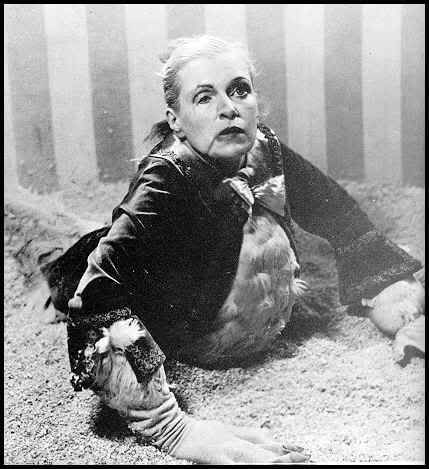


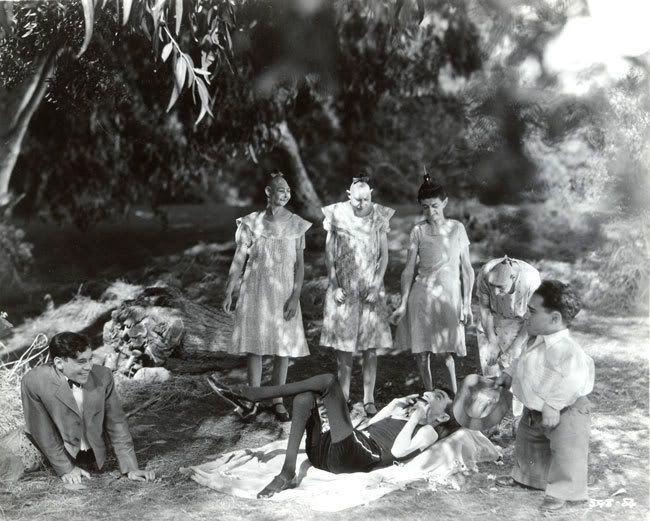
Sources:
http://en.wikipedia.org/wiki/Freaks
2008-07-16
Plantae universalis
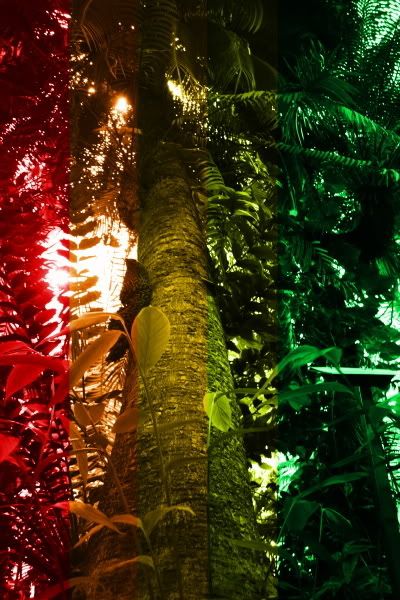
Scientists at NASA have actually figured out how potential plants on other planets might be colorized. Depending on the planets atmosphere (that works as a radiation filter, so it kind of decides what light that will be served to any plant down on the surface) and the type of star it orbits (for example, our sun emits most of its energy in the green spectrum…although most of this is later absorbed by the ozone in our atmosphere), the plant could be in basically any colour but blue. Although blue is a tempting colour for making up alien rainforest, flesh eating flowers and so on, it is a highly unlikely imagination since the majority of photosynthetic organisms harvest blue light and leaves no left over for the eye.
What makes my head scratch is why the scientist believe that they might find organism that would resemble our world's photosyntetic organisms that much. I would imagine the evolution of photosyntesis far too complex to be reproducible in similar ways of what we know. But hey, that's just my humble 25-year old mind being snotty.
Sources:
http://www.sciam.com/article.cfm?id=the-color-of-plants-on-other-worlds
UPDATE
Wouldn’t this be the perfect evolution study project: you take some (tons!) earthly seedlings of various known plant species, hitch a ride with a space shuttle to the closest planet with a life-friendly atmosphere and place out the seedlings all over the planet. Then go home, watch TV and wait a couple of million (or billion) years until you can return to the planet. When you return, you ought to see how time and new premises have affected photosyntesis. Would all of the plants evolve in the same directions (e.g. would they all be green? Or red? Or yellow?) or would they have scattered into a rainbow of photosynthetic possibilities?
2008-07-15
Freaky fungi
The almighty Linnaeus didn’t exactly share my liking of the fungi. He referred to them as a disgusting piece of mess and called them the roaming rabble of Flora. It was another Swede, namely Elias Fries that first set the foundations for the modern mycology. Basically, what we see as a fungus is the tip of the ice berg and is only a reproductive construction called the fruiting body. The majority of the organism lives multicellular filaments forming a mycelium (although some live as single cells, such as yeast).
Fruiting bodies are in my point of view the most vivid formations of what we know as life. Here are some examples of fungi (almost all are stinkhorns) that make my heart go a little bit quicker:
The name Phallus shamelessly points out that the fruiting body of this fungus resembles a human penis. This one is a smelly bastard, which has given it the name “stinkhorn”. Of course, some brave mouthed person has once discovered that this stinky thing is edible and therefore it is consumed in parts of
(Image revised from http://www.owlspleasure.com/sculpture/mushrooms/Phallus%20impudicus.JPG)
Clathrus ruber
Oh! This one – Clathrus ruber – just makes me happy all the way out to my fingertips. It looks like a metal climbing construction that we had in some play yards in my hometown (maybe that’s the reason behind my happiness) and apparently the inside is covered with smelly slime. A fungi for every childish mind that is not set on princesses and action figures!
(Image revised from http://micologia.net/g3/albums/Chlatrus-ruber/Clathrus_ruberfer.jpg)
Aseroë rubra
Now this is just weird. The anemone stinkhorn (Aseroë rubra) looks like something that managed to escape
(Image revised from http://www.ubcbotanicalgarden.org/potd/aseroe_rubra.jpg)
Out of the stinkhorn gang and into the tooth fungus world – here’s a bleeding tooth fungus. The fruiting body alters droplets of a red fluid on the salmon-pink, spongy body. The pigment that gives the “blood” its colour is called atrometin, which is similar to the anticoagulant heparin used in health care.
(Image revised from http://mushroomobserver.org/name/show_name/232)
Sources:
http://www.naturskolan.lund.se/blad/blad63-svamp/blad63.htm
http://sv.wikipedia.org/wiki/Elias_Fries
http://en.wikipedia.org/wiki/Fungus
http://www.rogersmushrooms.com/gallery/DisplayBlock~bid~6601.asp
http://en.wikipedia.org/wiki/Phallus_impudicus
http://www.mushroomexpert.com/clathrus_ruber.html
http://en.wikipedia.org/wiki/Asero%C3%AB_rubra
http://en.wikipedia.org/wiki/Hydnellum_peckii
http://www.uoguelph.ca/~gbarron/MISCE2002/hpeckii.htm
Scotoplanes
For marine biologist, the sea pig goes under the name Scrotoplanes. They feed on things found in the mud of the deep sea floor by using the tentacles to scope it in. Sea pigs live on or underneith the surface of the bottom. I don't know if the position is decided by the species or if all species can live both ways (maybe someone else knows?). Beauty is said to be in the eye of the beholder, but I can't seem to make up my mind on whether or not I'd like the appearance of the Scrotoplanes or if I'm just overwhelmed by unpleasant feelings. As one of my friends stated when I presented her a picture, "I am happy yet disgusted at the same time". They're cute, but ugly. They make you wanna cuddle them followed by shrieking in horror when you feel their cold (at least I imagine them as being cold) movement on your palm. They invoke very opposing feelings indeed...
 Scrotplanes belong to the phylum Echinoderms, which includes other sea floor creatures such as sea stars, sea urchins and sea cucumbers. In the phylum, they are further classified as Holothuroidea, which states that they are more related to the sea-cucumbers than the other members of this phylum. Together they form large groups on the sea floor, making their way in a sludge-like fashion. Movement is generated by using long tube feet. I don't know if these feet is what can be seen on the picture on the left, or if those feet-like thingies are just some tentacles or confusing ornaments of unknown purpose.
Scrotplanes belong to the phylum Echinoderms, which includes other sea floor creatures such as sea stars, sea urchins and sea cucumbers. In the phylum, they are further classified as Holothuroidea, which states that they are more related to the sea-cucumbers than the other members of this phylum. Together they form large groups on the sea floor, making their way in a sludge-like fashion. Movement is generated by using long tube feet. I don't know if these feet is what can be seen on the picture on the left, or if those feet-like thingies are just some tentacles or confusing ornaments of unknown purpose.(Image revised from http://www.mbari.org/benthic/holothurians.html)
Sources:
http://en.wikipedia.org/wiki/Scotoplanes
http://animals.jrank.org/pages/1631/Sea-Cucumbers-Holothuroidea-SEA-PIG-Scotoplanes-globosa-SPECIES-ACCOUNTS.html
Abeunt studia in mores
Of course, not everything is uninteresting. I'd like to think that I learn many extraordinary facts. Therefore I tend to spam my acquaintances with links, photos and whatever I feel can enchant them. This is basically the reason why I decided to blog; to pretend that there are beings interested in what I find interesting. Now I feel kind of egocentric...but again, aren't we all?
Oh, and by the way. The title of this first post (abeunt studia in mores) is my favorite latin phrase at the moment. It meens (well, at least it is supposed to meen) through study carachter grows. I thought it was a suitable title for a blog of this kind...


